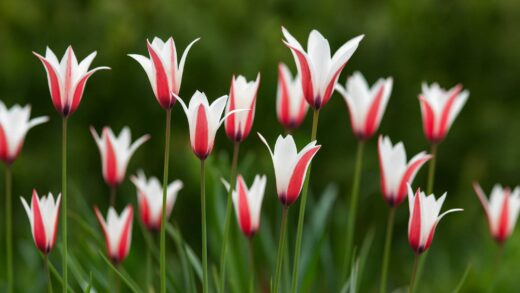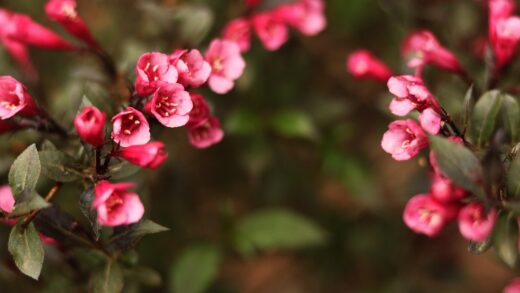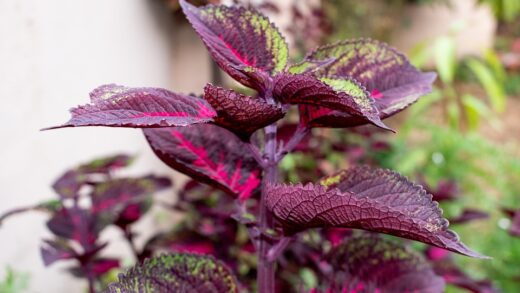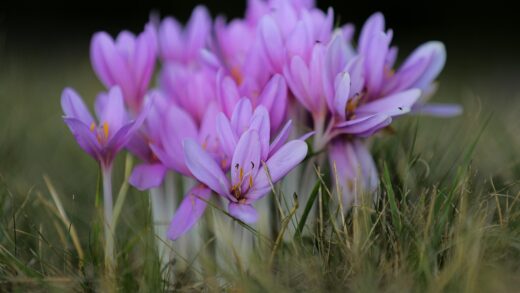Oleander, scientifically known as Nerium oleander, is one of the most beloved Mediterranean ornamental plants, gaining increasing popularity in our country as well. Its lush blossoms and showy, elongated leaves bring a true Mediterranean atmosphere to gardens, terraces, and balconies. However, for this beautiful plant to bloom abundantly year after year, it requires special care. It’s important to know that all parts of the oleander are poisonous, so always wear gloves when handling it and make sure it is out of reach of children and pets. This article provides a detailed guide to all the steps for successful oleander care, from choosing the right location to winter storage.
The placement and light requirements of oleander
Oleander belongs to the sun-loving plants, so proper placement is crucial for abundant flowering. The plant needs at least six hours of direct sunlight daily to produce flower buds and develop healthily. An oleander kept in a semi-shady or shady location will be stunted, its leaves will turn yellow, and it will fail to bloom. The most ideal spot for it is a south-facing terrace or balcony, where it receives direct sunlight during the midday hours.
When placing the plant, you also need to consider protection from the wind. Although oleander is relatively wind-resistant, strong, cold drafts can damage the shoots and flowers. It feels best in a sheltered corner, next to a wall, or among other larger plants. The combination of warmth and good air circulation creates an ideal environment for it. Additionally, proper ventilation helps prevent the development of fungal diseases, which can spread more easily in stagnant air.
During the summer, oleander can be safely kept outdoors after the risk of frost has passed. However, it is sensitive to sudden temperature changes, so it’s a good idea to gradually acclimatize it to outdoor conditions during spring. Keep it in a less sunny, sheltered spot for a few days before moving it to its final location. Gradual acclimatization protects the leaves from scorching and the plant from shock. This careful preparation contributes to the plant’s long-term health.
When choosing a location for oleander, it’s also worth considering that the plant can grow to a significant size during the summer months. Therefore, it needs enough space to not be crowded by other plants. The size of the pot is also important; choose a sufficiently large, stable container that won’t tip over easily in the wind. Good drainage is also essential, so make sure the pot has holes at the bottom.
More articles on this topic
The secrets of watering and nutrient supply
As a Mediterranean plant, oleander tolerates drought well, but for abundant flowering, it needs regular and generous watering. During the summer months, especially in hot weather, the plant’s water needs are significant, so it may need watering daily. The water shouldn’t be cold; lukewarm, standing water is best. It’s a good idea to put clay balls or pebbles at the bottom of the pot for good drainage.
Water deficiency can lead to yellowing leaves and dried-up flower buds, which significantly detracts from the plant’s appearance and performance. However, overwatering should also be avoided, as it can cause root rot. Always check the dryness of the top layer of soil before watering again. It can be said that oleander likes its soil to be slightly moist but never waterlogged. Always pour out any water that collects in the saucer to prevent the roots from standing in stagnant water.
Nutrient supply is also crucial for abundant flowering. Oleander requires regular fertilization during the spring and summer months. The best choice is a liquid fertilizer high in potassium and phosphorus, specifically developed for flowering plants. Follow the dosing instructions on the package, but generally, weekly or bi-weekly fertilization is recommended during the blooming season. Neglecting to use high-nitrogen fertilizers is important, as they stimulate foliage growth at the expense of flowers.
It’s best to fertilize along with watering, always applying the fertilizer to moist soil. This prevents the roots from getting burned and helps with optimal nutrient absorption. At the end of the growing season, in August or early September, gradually reduce the frequency of fertilization, and then stop it completely before winter storage. This prepares the plant for its winter rest period.
More articles on this topic
Pruning and shaping oleander
Regular pruning of oleander is essential for achieving a compact shape, lush foliage, and abundant flowering. The main pruning period is in the spring, after the risk of frost has passed, before new buds emerge. At this time, remove dead, damaged, or diseased branches, as well as any shoots that grow inwards and make the bush too dense. Disinfecting the pruning shears is an important step to prevent the spread of diseases.
Oleander blooms on the tips of the current year’s growth, so drastic pruning will significantly affect flowering. If a plant is cut back severely, it won’t bloom that summer, but it will bloom much more profusely the following year. Post-bloom pruning is also recommended, at which time you should remove the spent flower clusters, which stimulates the formation of new flowers. This process can be done continuously throughout the summer.
You can train oleander into either a bush or a tree shape. For a tree shape, choose one strong, straight main stem and remove all side shoots up to the desired height. To form the crown, cut back the upper shoots. For a bush shape, you can cut back the young plant multiple times to encourage branching, making the foliage denser and more compact.
Always wear thick gloves when pruning oleander, as the plant’s sap can cause irritation. After pruning, leave the cuts exposed to heal naturally. Do not leave the pruned branches near the plant; dispose of them in a safe place. The parts removed during pruning can also be used for propagation, which is a simple and effective method for growing new plants.
Recognizing, preventing, and treating pests and diseases
Oleander is a relatively resistant plant, but unfortunately, it can be attacked by several pests and diseases. The most common pests are aphids, scale insects, and spider mites. Aphids suck the plant’s sap from young shoots and buds, leading to distortion and a lack of flowering. Scale insects settle on the undersides of leaves and stems, sucking sap from under their small, brown, shield-like protective covers.
Spider mites are tiny spider-like creatures that multiply primarily in warm, dry air. They create a fine web-like netting on the undersides of leaves, causing the leaves to yellow and then dry up. To prevent the appearance of pests, it’s a good idea to inspect the plant regularly and, if necessary, treat it with a mild insecticide. Natural methods, such as nettle tea or garlic spray, can also be effective.
Among the fungal diseases of oleander, the most common are leaf spot and sooty mold. Leaf spot appears as dark brown or black spots on the leaves, which can lead to the death of the leaf in severe cases. Sooty mold is a black, soot-like coating on the leaves that settles on the honeydew secreted by scale insects or aphids. This hinders photosynthesis and weakens the plant.
To prevent diseases, proper watering, good drainage, and airy placement are important. Fungal diseases can be controlled with fungicides. Always read the product’s instructions and follow the dosing guidelines. It is important not to spray the plant in direct sunlight, as this can cause leaf burn. Early detection and quick treatment of diseases are crucial for maintaining the plant’s health.
Wintering oleander
Oleander is not a frost-hardy plant, so it must be overwintered in a frost-free place. Before winter storage, before the first frosts, water the plant thoroughly and remove any dead or damaged parts. The most ideal place for wintering is a cool, bright cellar, garage, or staircase where the temperature is between 5-10°C. It’s important that the temperature doesn’t fluctuate too much.
During winter storage, the oleander enters a dormant state, so its water needs are minimal. Watering it once a month with a very small amount of water is sufficient to prevent the root ball from drying out completely. Overwatering during the winter can lead to root rot, which will kill the plant. Fertilization should be completely suspended during winter storage.
If you don’t have a suitable bright location for wintering, the plant can also overwinter in a dark cellar, but in this case, the temperature must be even lower (about 2-5°C). When kept in a dark place, the oleander will drop its leaves, but this process is natural. In the spring, after it is brought back outside, it will produce new shoots and turn green again. This phenomenon is no cause for concern.
In the spring, after the risk of frost has passed (usually late April or early May), gradually re-acclimatize the plant to outdoor conditions. First, place it in a sheltered, less sunny spot, and then after a few days, move it to its final location. This will protect the leaves from scorching and prepare the plant for the growing season. At the first watering after wintering, you can give it a mild dose of fertilizer.
Repotting and propagation
Repotting an oleander is usually necessary every 2-3 years, or when the roots have completely filled the pot. The best time for repotting is early spring, before the buds emerge. Choose a pot that is 1-2 sizes larger than the previous one and has drainage holes at the bottom. Use good quality, nutrient-rich potting soil, to which it’s a good idea to mix in a little sand or perlite for better drainage.
When repotting, carefully remove the plant from the old pot and examine the root system. Remove any damaged or dead roots. Place the plant in the new pot, fill it with fresh soil, and gently press the soil around the roots. After repotting, water it thoroughly. It’s important not to put the plant in a pot that is too large, as this can cause excessive root development and a lack of flowering.
The easiest and most common method of propagating oleander is by cuttings. Cut a healthy, woody shoot about 10-15 cm long from the plant and remove the lower leaves. You can root the cuttings in water or in a mixture of moist sand and perlite. When rooting in water, change the water weekly to prevent mold. After roots appear, plant the cutting in a smaller pot.
The ideal time for taking cuttings is early summer. You can increase the success rate of propagation by using a rooting hormone powder. Keep the young plants in a warm, bright place and keep their soil moist, but avoid overwatering. After successful rooting, the plants will develop quickly and may even produce flowers the following year.
Oleander in modern gardens and on balconies
Oleander is not just a plant; it’s a true decorative element that creates a Mediterranean atmosphere and holds its own in modern gardens and on balconies. Its different varieties, with flower colors ranging from white and yellow to deep pink and red, offer opportunities for creative combinations. Planted in a large pot and paired with other Mediterranean plants like lavender or rosemary, it can create a true oasis.
Oleander is excellent for functioning as a solitary plant, as a central feature on a terrace or balcony. The tree-shaped specimens add elegance and structure to the space. The bush-shaped plants, on the other hand, provide a lush, colorful background for other, smaller flowers. When designing with oleander, it’s important to consider the plant’s final size to ensure it has enough space to grow.
Regularity and attention are key when caring for oleander. Regular watering, nutrient replenishment, and pruning will be rewarded, and the plant will repay the care with abundant flowering. Preparing for winter rest and wintering are also crucial to keep the plant beautiful year after year. Caring for an oleander is a kind of ritual that begins with the approach of summer and lasts until the onset of winter.
Last but not least, don’t forget about the plant’s toxicity. Although oleander is beautiful, all parts of it are poisonous. Wear gloves when handling it and make sure it is out of reach of children and pets. Thoroughly washing your hands after pruning is a must. Oleander is a wonderful plant that can bring a lot of joy to its owner under safe conditions.


















